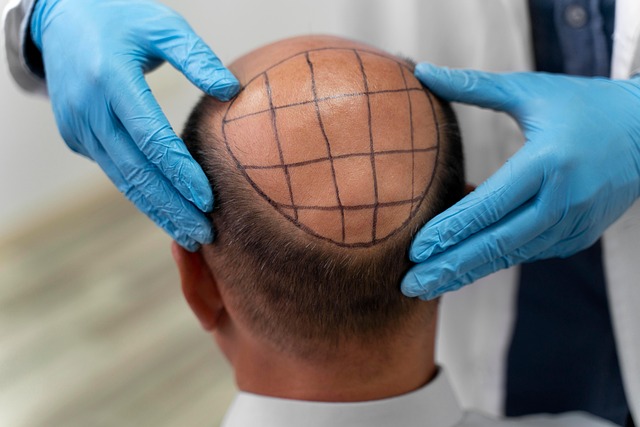Hair Transplants Explained: Restore Your Natural Look
Considering hair restoration? This in-depth guide covers modern hair transplant options—FUE, FUT, robotic-assisted techniques, and PRP adjuncts—so you can understand benefits, recovery timelines, and cost factors. Learn how transplants restore natural hair growth and when to consult a specialist.

Hair loss can affect confidence and appearance, but surgical hair restoration offers a durable way to rebuild a natural hairline and fuller coverage. Advances in techniques and tools have made results more natural-looking than ever. This guide outlines the main procedures, expected outcomes, recovery, costs, and alternative uses beyond the scalp to help you make an informed choice.
Common hair transplant techniques
Two principal methods dominate current practice: Follicular Unit Transplantation (FUT) and Follicular Unit Extraction (FUE). FUT, sometimes called the strip method, removes a narrow strip of scalp from the donor area, which is then microscopically dissected into individual follicular units for implantation. FUE harvests follicles one by one from the donor site and implants them directly into the recipient area.
Both approaches aim to recreate the natural direction, angle, and density of hair growth, yielding results that blend with existing hair. Variations have emerged: robotic-assisted FUE uses imaging and robotic arms to extract and place grafts with high precision, and some clinics combine transplants with platelet-rich plasma (PRP) therapy to improve graft survival and stimulate growth.
Benefits of choosing a transplant
A major advantage of hair transplantation is permanence. Unlike temporary solutions such as wigs, topical concealers, or hairpieces, transplanted follicles are resistant to the pattern hair loss process when taken from stable donor zones. Transplanted hair grows, can be cut, colored, or styled like native hair, and may dramatically improve self-image.
Patients commonly report increased confidence, a more youthful appearance, and positive effects in social and professional settings. Modern surgical planning focuses on replicating natural hairlines and follicular groupings so the outcome is difficult to distinguish from original hair growth.
Procedure experience and recovery
A hair transplant session can last several hours and sometimes requires more than one visit depending on the number of grafts. Local anesthesia keeps you comfortable throughout; patients may also receive mild sedation.
During the operation, the surgeon and team carefully harvest grafts, prepare recipient sites, and implant follicles following the natural growth pattern. Afterward, some swelling, soreness, and tenderness in donor and recipient zones is normal and typically resolves in a few days. Small scabs form around implanted grafts and fall off within one to two weeks.
A normal part of recovery is “shock loss,” when the transplanted hair sheds two to three weeks after surgery. This temporary shedding makes way for new follicles to enter an active growth phase. Most patients notice visible regrowth at about three to four months, with progressive improvement; final results generally appear between 12 and 18 months post-op.
Pricing and what affects cost
Costs vary widely because pricing commonly depends on the number of grafts needed, the technique chosen, geographic location, and surgeon experience. Per-graft pricing often ranges from $3 to $8, but total procedures are frequently quoted as package prices.
| Procedure Type | Average Cost Range | Factors Influencing Cost |
|---|---|---|
| FUT (Strip Method) | $4,000 - $15,000 | Number of grafts, surgeon experience, facility fees |
| FUE | $5,000 - $20,000 | Graft count, manual vs. robotic extraction, clinic reputation |
| Eyebrow Transplant | $3,000 - $8,000 | Design complexity, hairs required, artistic skill |
Prices, rates, or cost estimates mentioned in this article are based on the latest available information but may change over time. Independent research is advised before making financial decisions.
Most insurance plans do not cover hair transplantation because it is considered cosmetic. Many clinics offer financing plans to spread payment over time.
Beyond the scalp: other applications
Hair transplant techniques are useful for more than just scalp restoration. Eyebrow transplantation is increasingly popular for people with sparse, overplucked, or damaged brows; it requires meticulous placement to mimic natural brow direction. Facial hair restoration—beard and mustache transplants—helps men fill patchy areas, improving facial symmetry and density. Body hair transplantation can also be used to restore chest hair or to conceal scars when appropriate donor hair is available.
Choosing a clinic and surgeon
Selecting an experienced, board-certified hair restoration specialist is critical. Look for a clinic that provides clear explanations of the recommended technique, realistic before-and-after photos, transparent pricing, and postoperative care instructions. Ask about the surgeon’s complication rates, graft survival expectations, and follow-up schedule.
Final considerations
Hair transplantation can offer long-lasting, natural-looking improvement for many types of hair loss when performed by a skilled team. Recovery involves predictable stages—initial shedding followed by gradual regrowth—and costs depend on graft needs and technique. Combining procedures like PRP or using robotic assistance can influence outcomes and pricing.
This article is for informational purposes only and should not be considered medical advice. Please consult a qualified healthcare professional for personalized guidance and treatment.





